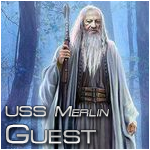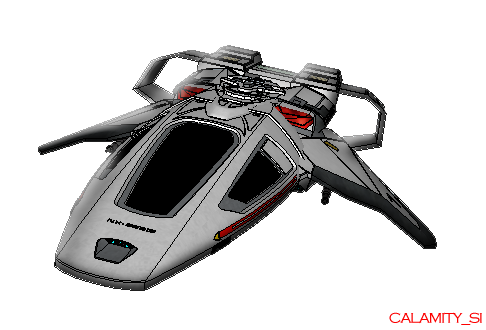Specifications - AH-12 "Phoenix" Class Multirole Fighter
Summary
General
| Class | Phoenix | |
| Role | Multirole Fighter |
Dimensions
| Length | 18 m | |
| Width | 16 m | |
| Height | 6.6 m |
Personnel
| Officers | 1 |
Speed
| Cruise Speed | Warp 5 | |
| Maximum Speed | Warp 6 | |
| Emergency Speed | Warp 7.2 for 5 hours |
Weapons & Defensive Systems
| Shields | Fighter Shielding System | |
| Weapon Systems | Phasers Type V Array: 4 Type U+ Micro-Pulse: 2 |
|
| Armament | Defensive Systems Ablative Armour Micro-Torpedoes Micro-Torpedo Launchers: 2 Micro-Quantum Torpedoes: 40 (20 each launcher) |
Overview
| Discription | The Phoenix class can mount 3 more torpedos - 1 on each with and one centerline or add a reconnaissance pod to centerline. The Phoenix Class was designed by then 1st Lieutenant John "Apollo" Barstow, who had recently finished his Masters degree in engineering, after losing half a squadron in the Regina 4 campaign. The CO requested a more advanced fighter be designed. The Phoenix was named after the mythical bird that rose from the ashes because of the way the squadron came back from nearly being wiped out. The Phoenix was slimmed down and the chassis has completely redesigned since it's inception, the type one looking more like a 20th century fighter with shorter wings. The newer design offers a flatter design and gets rid of the tail fin the MKI had. Phaser arrays are on either side of the nose, under and in front of the cockpit, on the ventral side and at the aft dorsal side of the fighter. There are two, forward facing pulse cannons - one under each wing. In addition there are also two micro-quantum torpedo launchers, on the dorsal side of each wing, behind the cockpit, that carry 20 torpedoes each launcher. In addition to it's standard armaments the Phoenix has 3 hardpoints - one under each wing and one on it's centerline - that can accommodate either 3 more torpedoes or a reconnaissance pod. |

